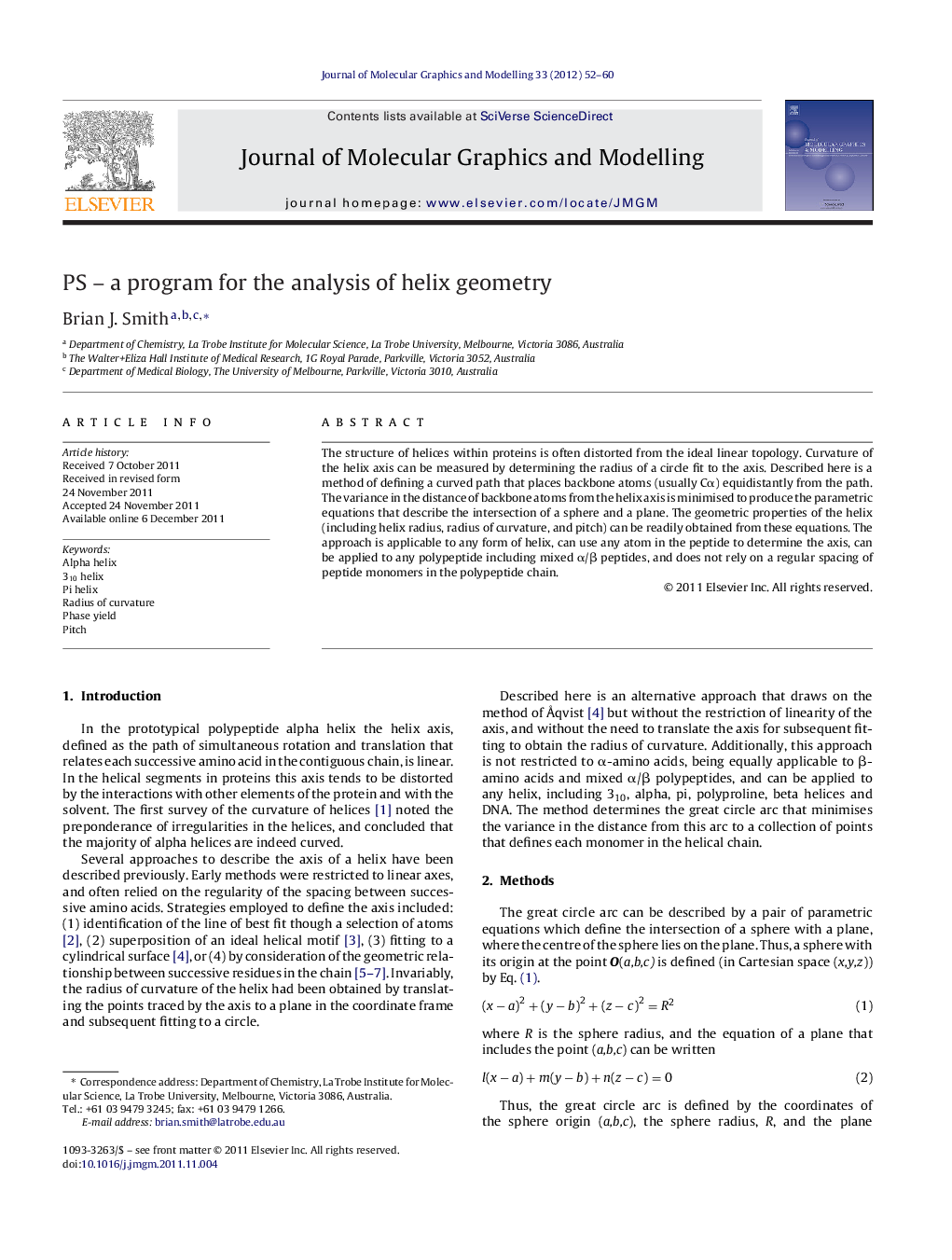| Article ID | Journal | Published Year | Pages | File Type |
|---|---|---|---|---|
| 444411 | Journal of Molecular Graphics and Modelling | 2012 | 9 Pages |
The structure of helices within proteins is often distorted from the ideal linear topology. Curvature of the helix axis can be measured by determining the radius of a circle fit to the axis. Described here is a method of defining a curved path that places backbone atoms (usually Cα) equidistantly from the path. The variance in the distance of backbone atoms from the helix axis is minimised to produce the parametric equations that describe the intersection of a sphere and a plane. The geometric properties of the helix (including helix radius, radius of curvature, and pitch) can be readily obtained from these equations. The approach is applicable to any form of helix, can use any atom in the peptide to determine the axis, can be applied to any polypeptide including mixed α/β peptides, and does not rely on a regular spacing of peptide monomers in the polypeptide chain.
Graphical abstractFigure optionsDownload full-size imageDownload high-quality image (155 K)Download as PowerPoint slideHighlights► A new approach to the analysis of helices in biological macromolecules is described. ► Properties of helices evaluated include helix radius, pitch and radius of curvature. ► This approach can be applied to any helical structure of proteins, DNA or carbohydrates.
